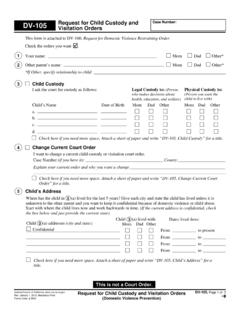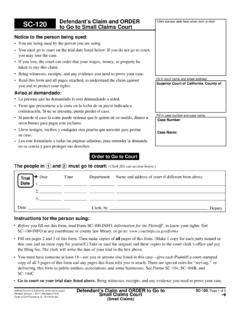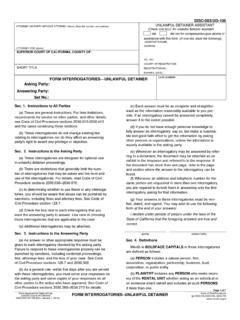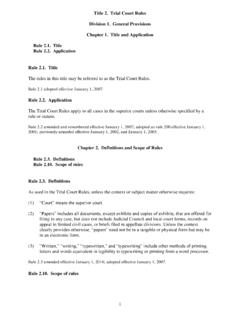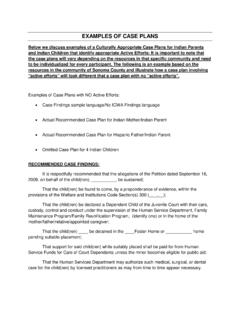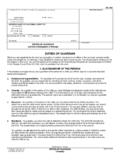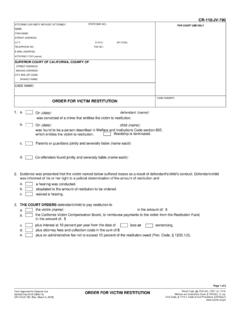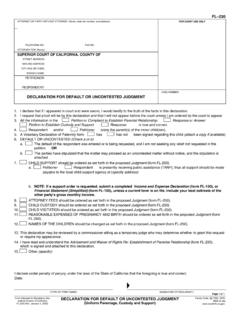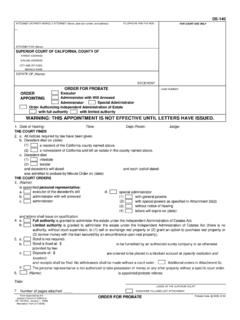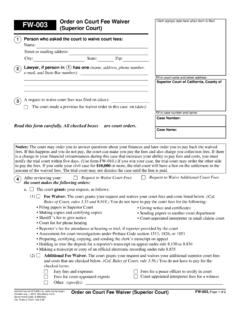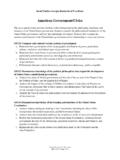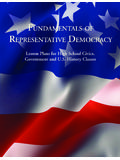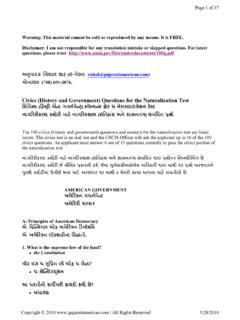Transcription of Lesson Plan: The Constitution: What it Says and What it …
1 Curricula for K-12 Civics Education Lesson plan : The constitution : what it Says and what it Means Grade Level: 5th Context of the Unit: This is a fifth grade social studies unit focusing on how the original thirteen colonies transitioned from independent states to a united nation. Through a series of readings and activities students will first learn about what life was like during and immediately following the american Revolution. They will then participate in further readings and hands-on activities aimed and increasing their understanding of the Articles of Confederation, the constitution , and the Bill of Rights.
2 Context of the Lesson : Through participation in this Lesson students will learn what the constitution says, what it means, and its importance. Students will be able to identify how the constitution addressed the shortcomings of the Articles of Confederation, how our government derives its power from the people, and how our government is composed of three branches of government. Prior to this Lesson , students will have studied how life was different during 1787. They will have analyzed the Articles of Confederation and will understand the problems and weaknesses of this document.
3 Through the core literature book SHHH! We're Writing the constitution by Jean Fritz, a power point presentation, and the creation of a flip book, students will understand the challenges surrounding the creation of the constitution , what the constitution says, and what it actually means. From here, students will go on to examine the significance of the Bill of Rights, and ultimately, at the conclusion of this unit, they will understand how our government was created by the people, for the people, and that as citizens of the United States they have a responsibility to protect the rights established in the constitution through active participation in government.
4 CVCS- Lesson -Kramer-a 04/16/2012. This curriculum does not necessarily reflect the views of the Judicial Council, the AOC, or the Court Programs and Services Division/CPAS. Furthermore, the authors, the Judicial Council, the AOC, and the Court Programs and Services Division/CPAS do not provide any warranties regarding the currency or accuracy of the information in these works. Users are reminded to check the subsequent history of any case and changes to statutes and Rules of Court cited in the works before relying on them. These works are provided for the personal noncommercial use of teachers and may not be used for any other purpose without the written permission of the authors.
5 Curricula for K-12 Civics Education Standards Addressed: History Social Studies Standards: Students describe the people and events associated with the development of the constitution and analyze the constitution 's significance as the foundation of the american republic. 1 List the shortcomings of the Articles of Confederation as set forth by their critics. 2 Explain the significance of the new constitution of 1787 including the struggles over its Ratification and the reasons for the addition of the Bill of Rights. 3 Understand the fundamental principles of american constitutional democracy, including how the government derives its power from the people and the primacy of individual liberty.
6 4 Understand how the constitution is designed to secure our liberty by both empowering And limiting central government and compare the powers granted to the citizens, Congress, the president, and the Supreme Court with those reserved for the states. English/Language Arts Standards: Reading: Main idea and details Analyze text Draw inferences and conclusions Writing: Write a persuasive letter or composition: State a clear position in support of a proposal Support a position with relevant evidence Common Core State Standards for ENGLISH LANGUAGE ARTS & Literacy in History/Social Studies, Science, and Technical Subjects K-5.
7 College and Career Readiness Anchor Standards for Writing K-5. CVCS- Lesson -Kramer-a 04/16/2012. This curriculum does not necessarily reflect the views of the Judicial Council, the AOC, or the Court Programs and Services Division/CPAS. Furthermore, the authors, the Judicial Council, the AOC, and the Court Programs and Services Division/CPAS do not provide any warranties regarding the currency or accuracy of the information in these works. Users are reminded to check the subsequent history of any case and changes to statutes and Rules of Court cited in the works before relying on them.
8 These works are provided for the personal noncommercial use of teachers and may not be used for any other purpose without the written permission of the authors. Curricula for K-12 Civics Education Text Types and Purposes 1. Write arguments to support claims in an analysis of substantive topics or texts, using valid reasoning and relevant and sufficient evidence. 2. Write informative/explanatory texts to examine and convey complex ideas and information clearly and accurately through the effective selection, organization, and analysis of content. 3. Write narratives to develop real or imagined experiences or events using effective technique, well-chosen details, and well-structured event sequences.
9 Objectives: Students will: be able to identify why the Articles of Confederation gave the central government limited powers. Be able to list the shortcomings of the Articles of Confederation. Identify those individuals who were instrumental in creating the United States. Identify the Federalist and Anti-Federalist points of view regarding the new constitution . Know the reasons for the addition of the Bill of Rights. Know the first 10 Amendments and the rights they protect. Understand how the United States government derives its power from the people. Be able to identify the three branches of government and the roles and duties of each branch.
10 Be able to identify the role the citizen plays within the three branches of government. Understand the judicial system and the responsibilities of the american citizen within this system. Understand how the judicial system calls on citizens to safeguard the individual liberties of individual Americans. CVCS- Lesson -Kramer-a 04/16/2012. This curriculum does not necessarily reflect the views of the Judicial Council, the AOC, or the Court Programs and Services Division/CPAS. Furthermore, the authors, the Judicial Council, the AOC, and the Court Programs and Services Division/CPAS do not provide any warranties regarding the currency or accuracy of the information in these works.
